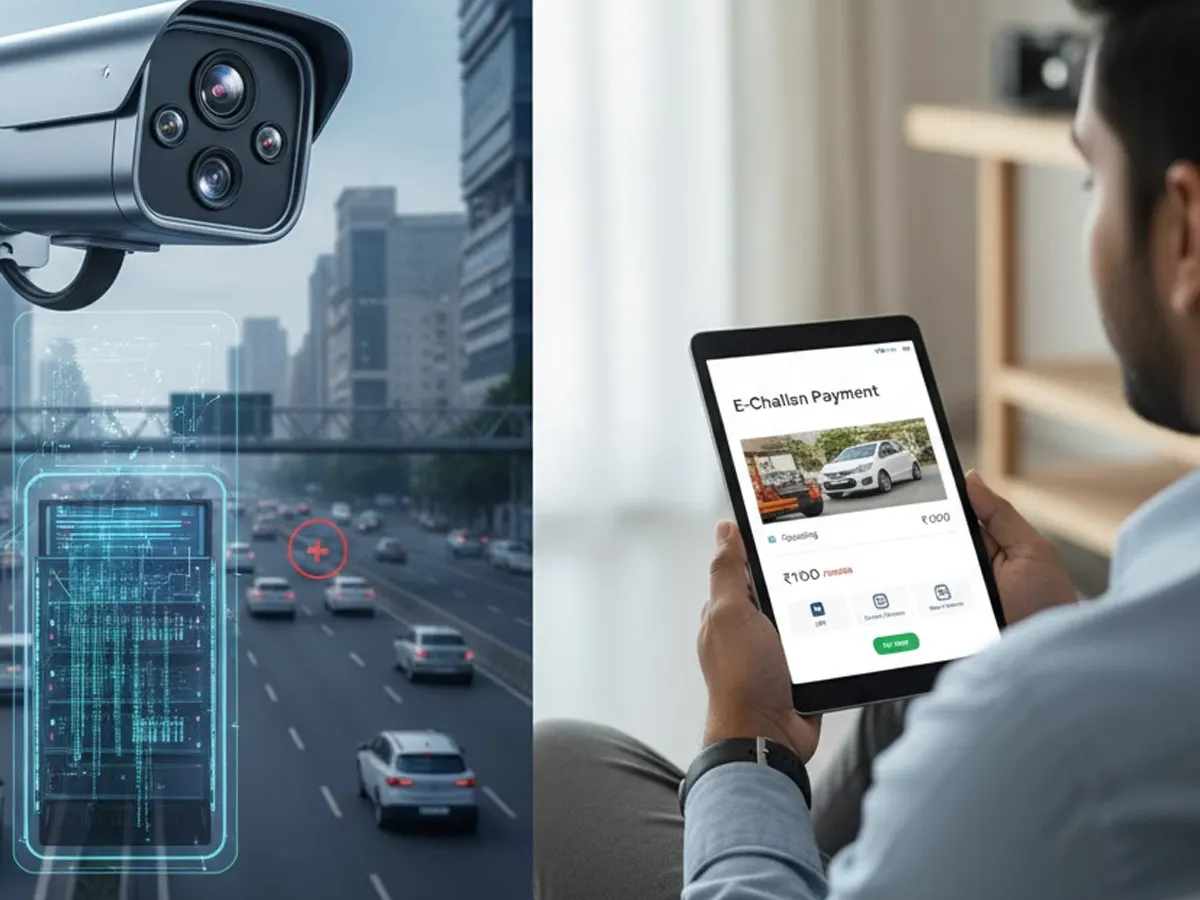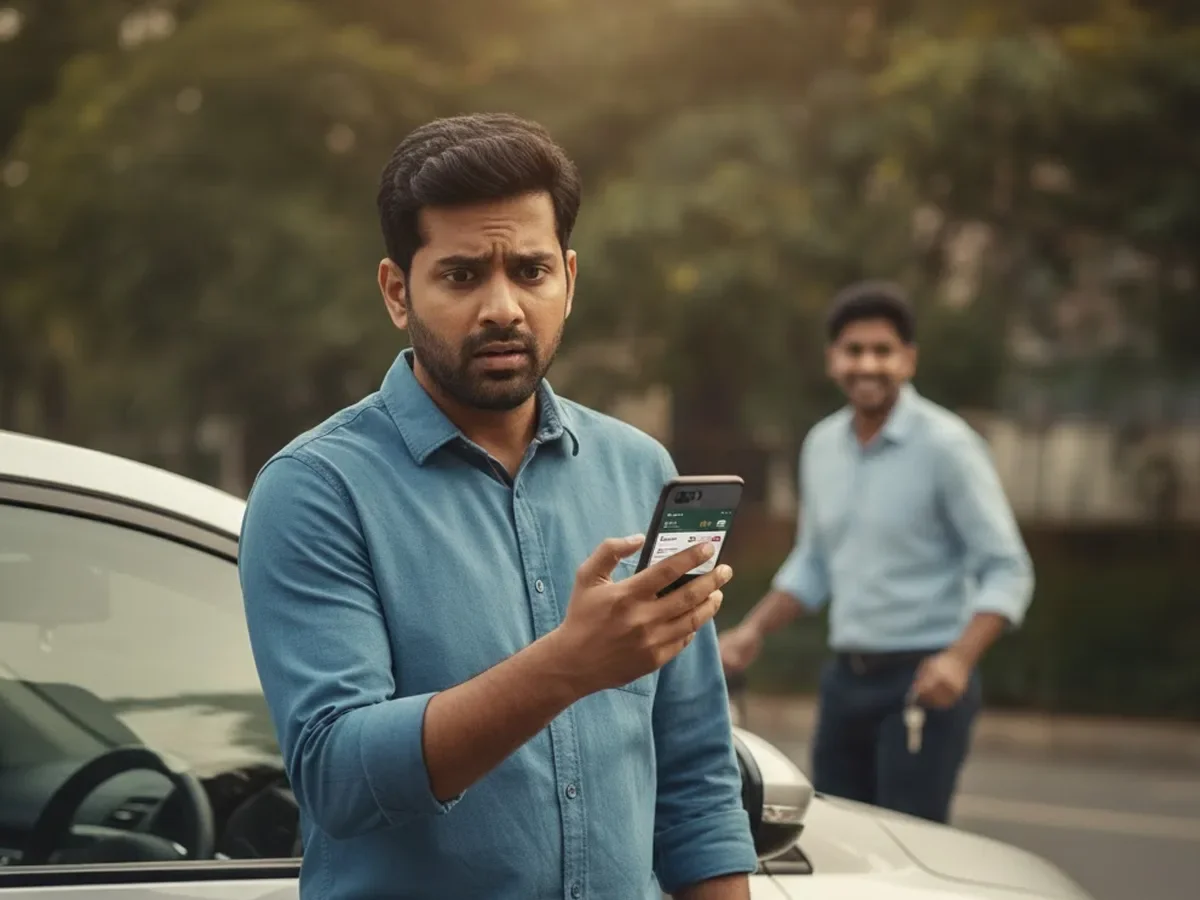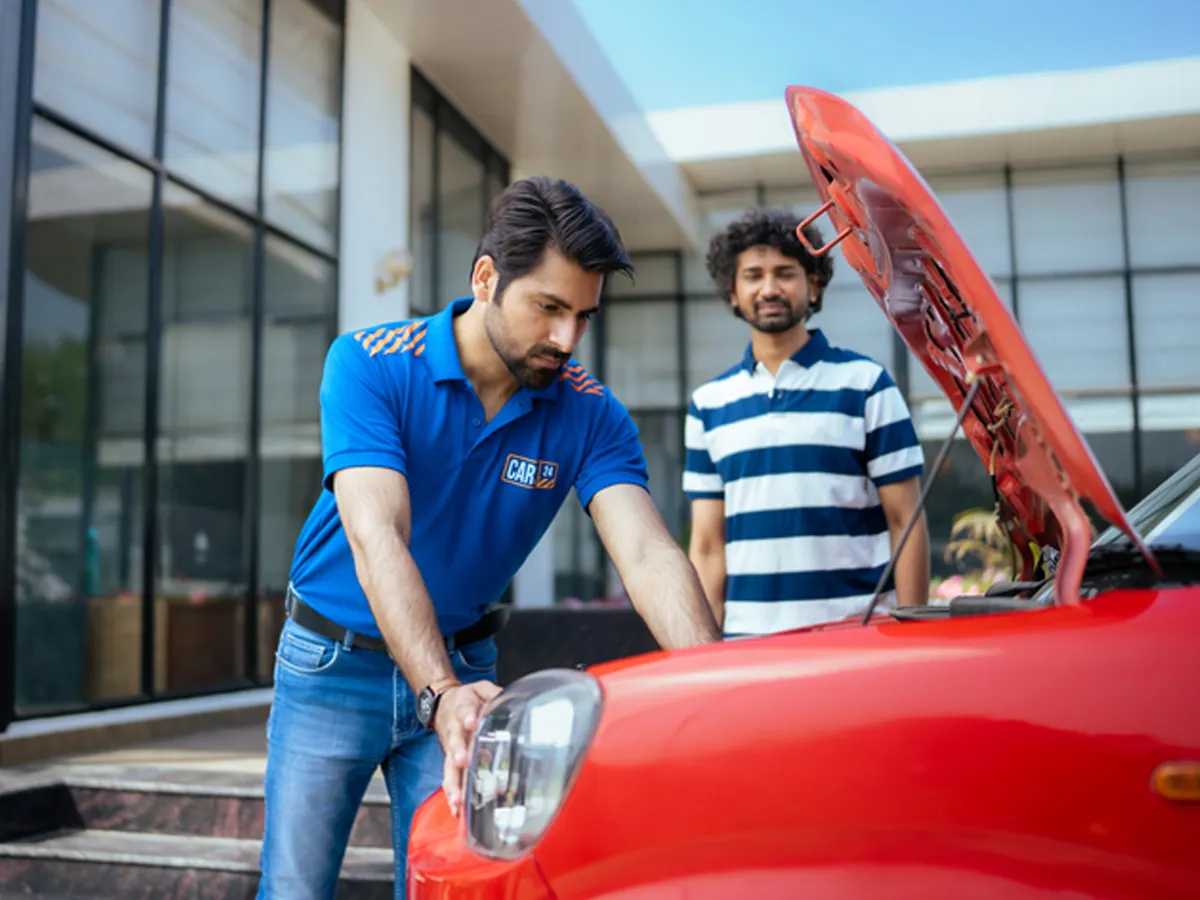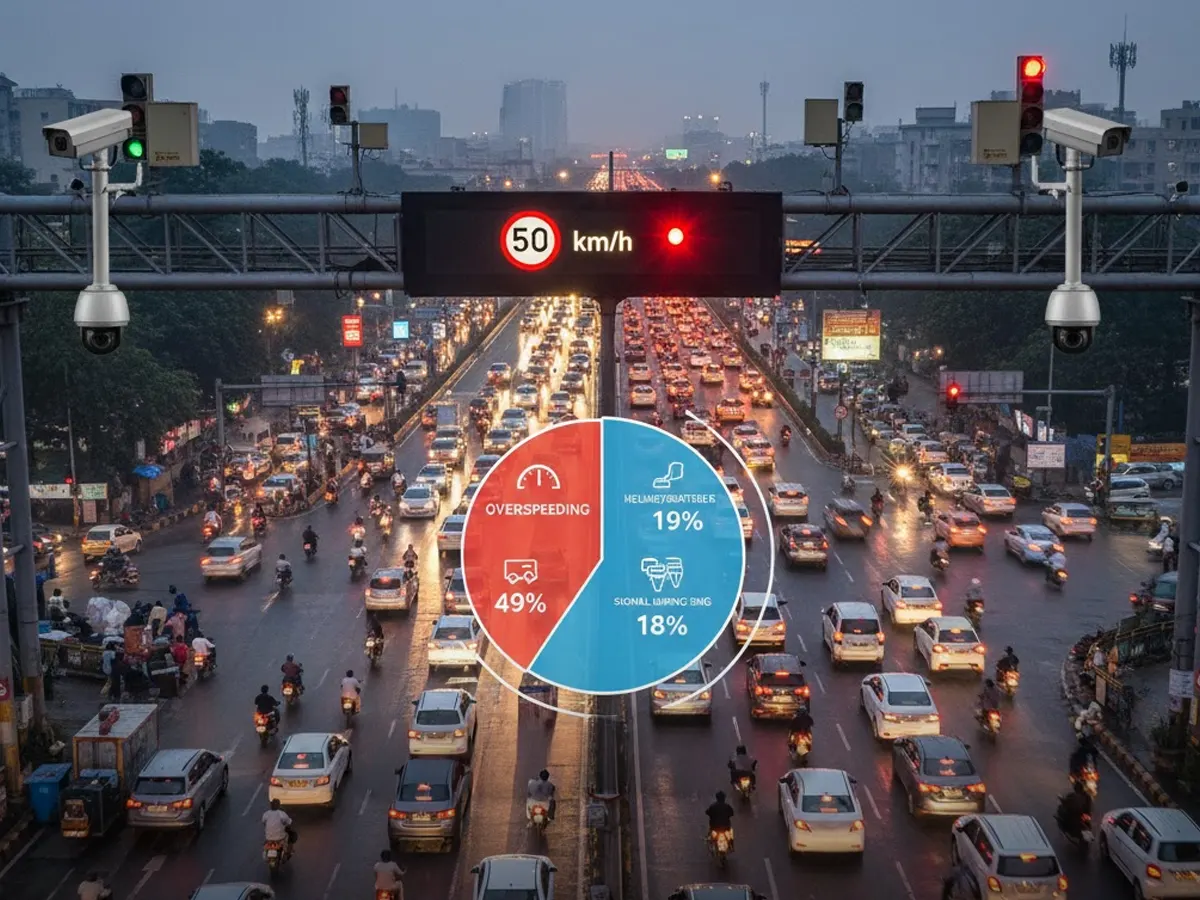

From Detection to Payment: The End-to-End Journey of an E-Challan in India
- 1The e-challan process begins with AI detection and ends with digital payment
- 2Violations are verified through the VAHAN and SARATHI databases before issuance
- 3Use e-challan check online portals to verify, contest, or clear fines easily
- Step 1: Detection - Where the Process Begins
- Step 2: Verification - Cross-Checking with Central Databases
- Step 3: Generation - When the E-Challan Is Created
- Step 4: Notification - How You’re Informed
- Step 5: Payment - Clearing It the Right Way
- Escalation - When You Don’t Pay
- Record-Keeping - The Invisible Layer
- How Will This System Change How Enforcement Works?
- Summary
You may never see it happen, but the moment your vehicle crosses a speed limit or skips a signal, the infraction is recorded in most metro cities. A camera clicks, a server verifies, and a few seconds later, a digital challan is generated. It is now part of the automated e-challan process in India, a system designed to introduce transparency, accuracy, and accountability to all the violations that are registered on the road.
Let’s go over what really happens between detection and payment and why this digital chain is now the foundation of India’s traffic enforcement system.
Step 1: Detection - Where the Process Begins
The journey begins when a violation takes place. The event is captured in real time by high-definition AI cameras or handheld devices that are used by traffic police.
The Automatic Number Plate Recognition (ANPR) software is used to scan each picture or video and it decodes the registration number of the vehicle in real time. It uses the number to match it with the national VAHAN database to retrieve ownership information. In most cases, this is near-real-time, though poor image quality or edge cases may trigger manual review or reprocessing.
It is in this initial step that the e-challan process in India thrives on its strength: it is mostly automated, objective and supported by data rather than discretion.
Step 2: Verification - Cross-Checking with Central Databases
Once the violation is detected, the system does not immediately rush to impose a fine. The breach is confirmed by backend authentication in VAHAN (vehicle information) and SARATHI (licence information). This makes sure that the challan is associated with the owner in the database, even if the vehicle has been sold recently.
For example, if your car was sold last year but the RC transfer had not been done, the e-challan process in India will still identify the former owner. This is the reason why it is essential to update your records, as the system does not forget. During verification, all information, such as the violation specifics, place, time, and the type of violation, is stored in a digital format for audit trails.
Step 3: Generation - When the E-Challan Is Created
Upon confirmation, the system automatically generates an e-challan with your vehicle number, the rule violated, fine, date, and photo or video evidence.
You will generally get an SMS notification on your registered cell phone number. The challan appears on the portal the same day in most states. It is this real-time transparency that makes the difference between the modern e-challan process in India from its paper-based predecessor, as there is no intermediary, no paperwork, and almost no lag time.
Step 4: Notification - How You’re Informed
Drivers can be informed in several ways, including SMS, email or directly on the state traffic site. However, please note that tot every challan message you receive is authentic. Never respond to alerts without first checking them through online portals, such as Parivahan, or other reputable sites, such as CARS24.
Every valid challan has a distinct ID and it can be verified immediately. If your challan does not appear on the official system, it is either an error or a scam, so do not pay blindly.
Step 5: Payment - Clearing It the Right Way
After the confirmation of the challan, you can clear it through a number of secure channels:
- State Traffic Police websites (e.g., Delhi Traffic Police, Telangana Police portal)
- Parivahan Portal by MoRTH (centralised across India)
Partner platforms such as CARS24 for an easy e-challan check online and payment gateway integration
You can pay through UPI, debit card, credit card or net banking. After the payment is done, a digital receipt is created automatically. This is your legal proof that the challan is closed.
This final step closes the loop of the e-challan process in India from detection, verification, generation, and payment, and all these are linked together in a single digital ecosystem.
Escalation - When You Don’t Pay
States typically transfer unpaid challans to virtual courts after a 60–90 day window (timelines differ by state). Under ONOC and state virtual-court rollouts, unresolved dues can lead to court proceedings and, in many jurisdictions, administrative holds on RC transfer or licence renewal.
Other states, such as Gujarat, have begun to automatically incorporate this process under the One Nation One Challan Initiative, which doesn’t allow vehicle owners to renew documents until the old dues are paid.
This escalation mechanism ensures that the e-challan process in India does not end at detection: it now ensures accountability.
Record-Keeping - The Invisible Layer
Every digital challan is permanently recorded against your RC. Such records contribute to the national road safety analytics, which helps authorities in determining the areas prone to accidents, the offenders and the risky driving behaviours. Your e-challan is a piece of data that informs the planning of cities with regard to traffic lights, road audits, and areas of enforcement.
How Will This System Change How Enforcement Works?
The automation is supported by a system that is constructed to be fair, one that eliminates guesswork, enhances visibility and makes all steps traceable.
- Transparency: Proof-backed challans reduce disputes.
- Accountability: Every payment is digitally recorded.
- Accessibility: Drivers can access, contest, and clear fines anytime, anywhere.
Integration: Links directly with VAHAN, SARATHI, and ONOC for seamless tracking.
In short, the e-challan process in India is not about collecting fines anymore, but rather creating a network of connected enforcement that sees, records and takes action with accuracy.
Summary
The e-challan process in India has turned road enforcement into a real-time and entirely digital system from detection to payment. The process that took days and paperwork before is now done in minutes using automated verification and instant payment gateways.
To stay ahead, regularly check your fines online, make payments on time and maintain your records because on today’s roads, accountability is just a single click away.
Frequently Asked Questions
Expand all





























